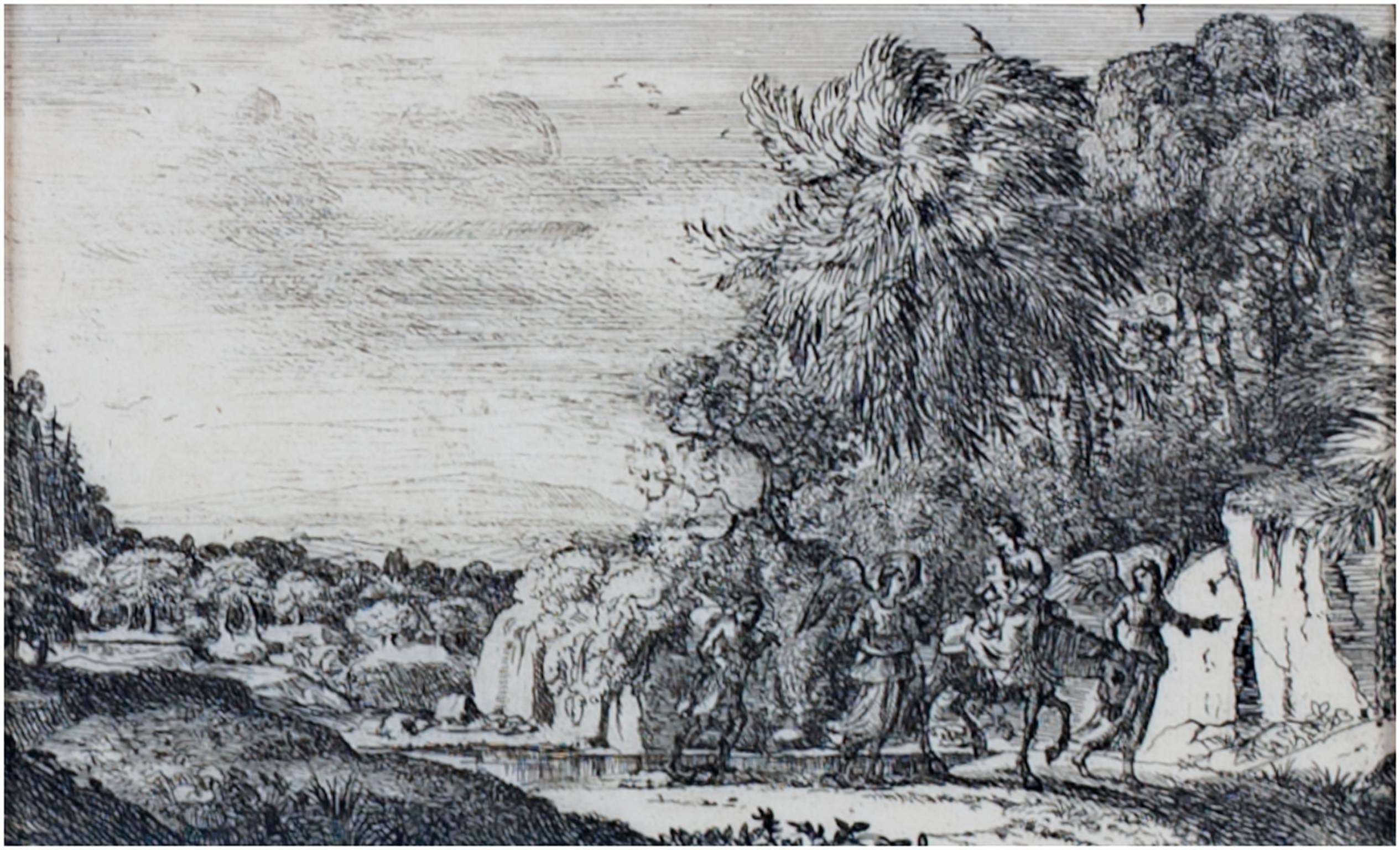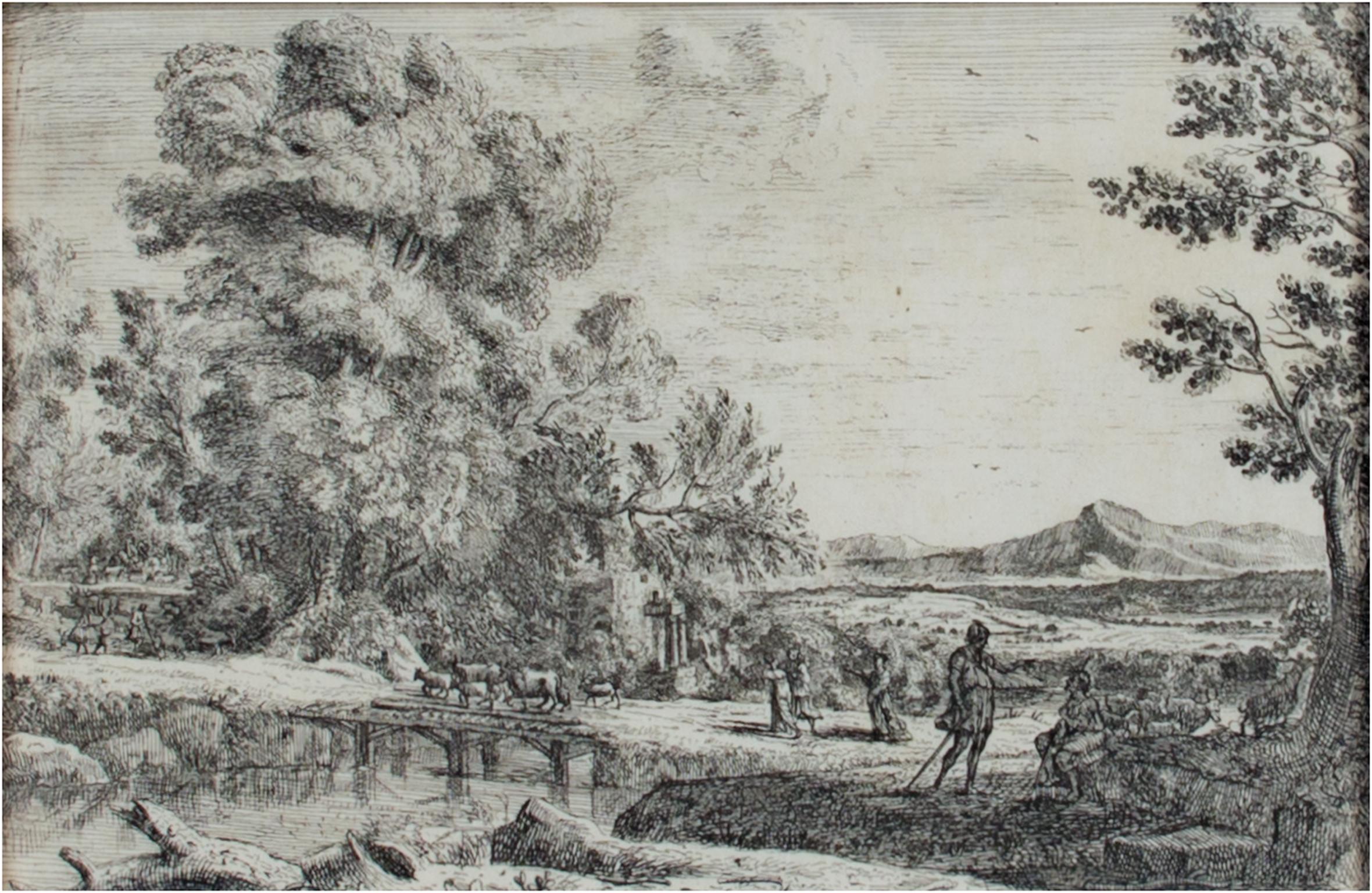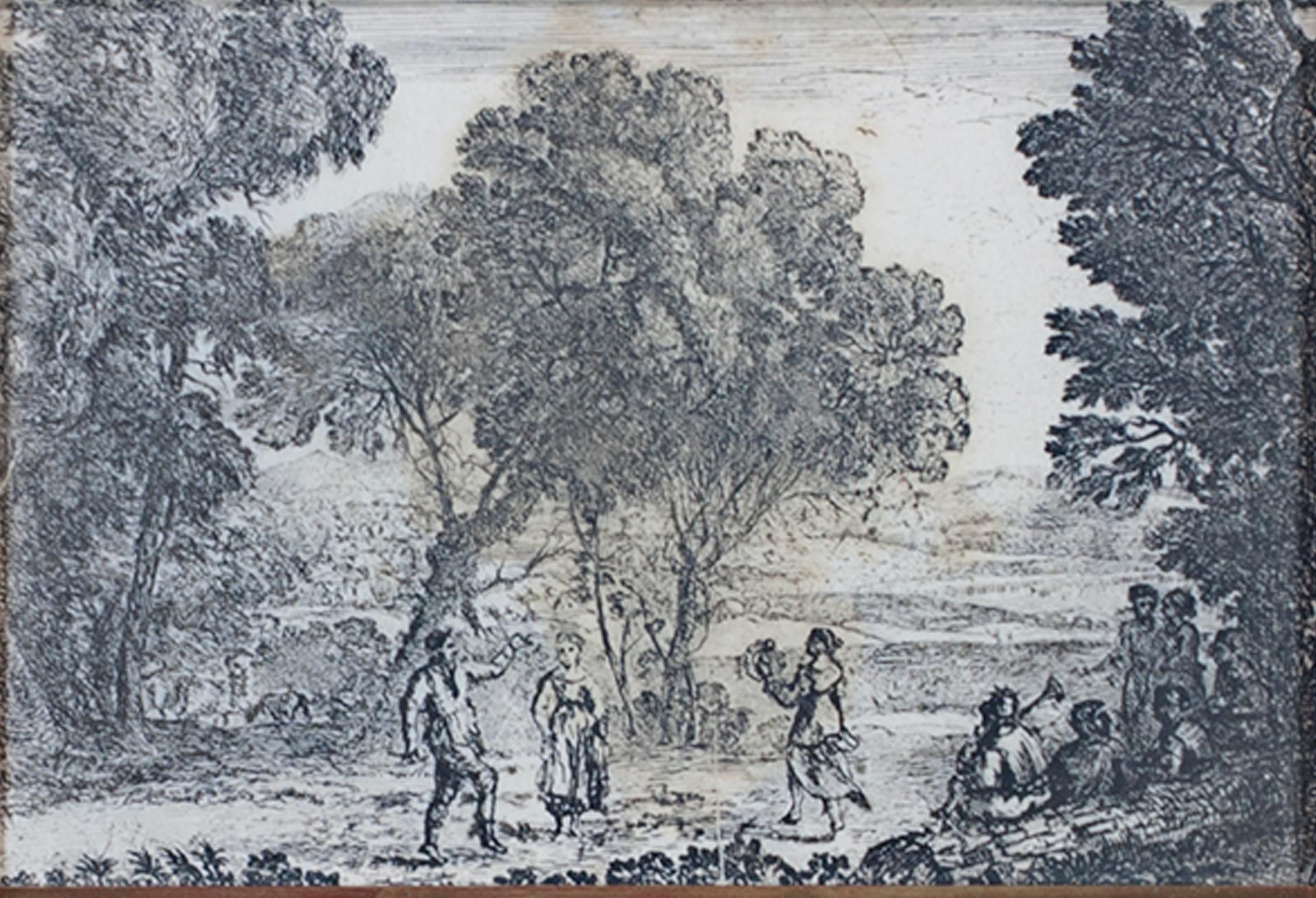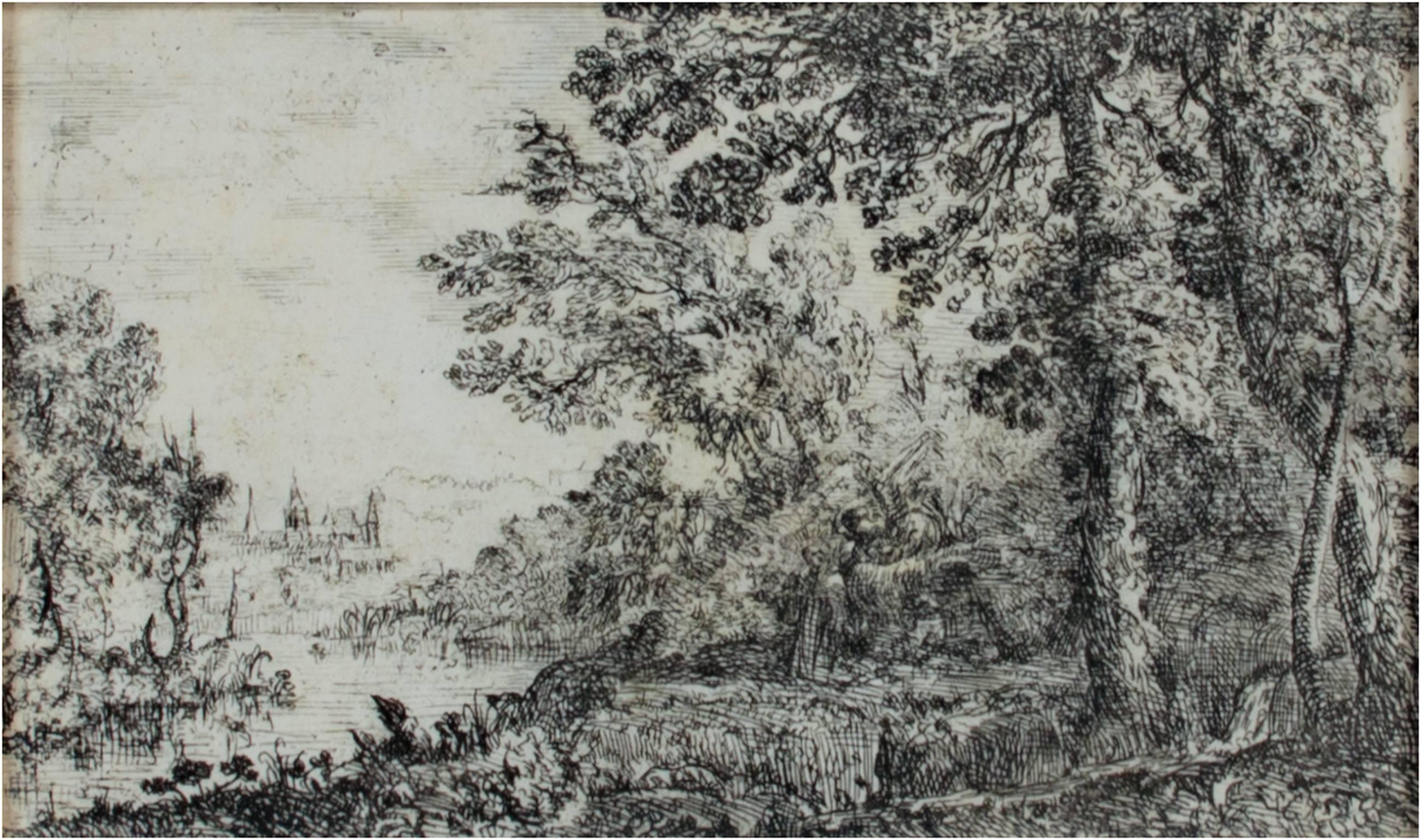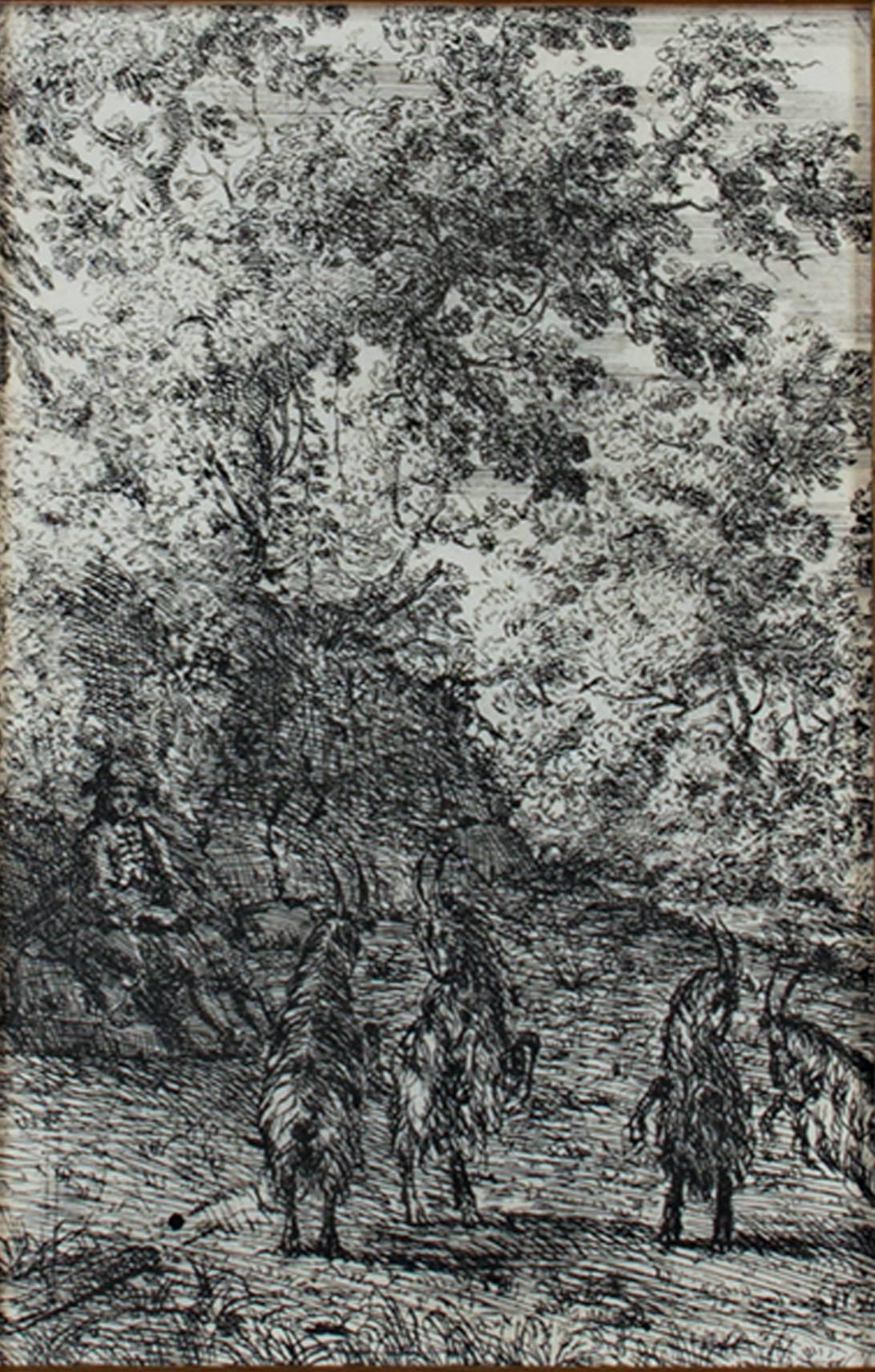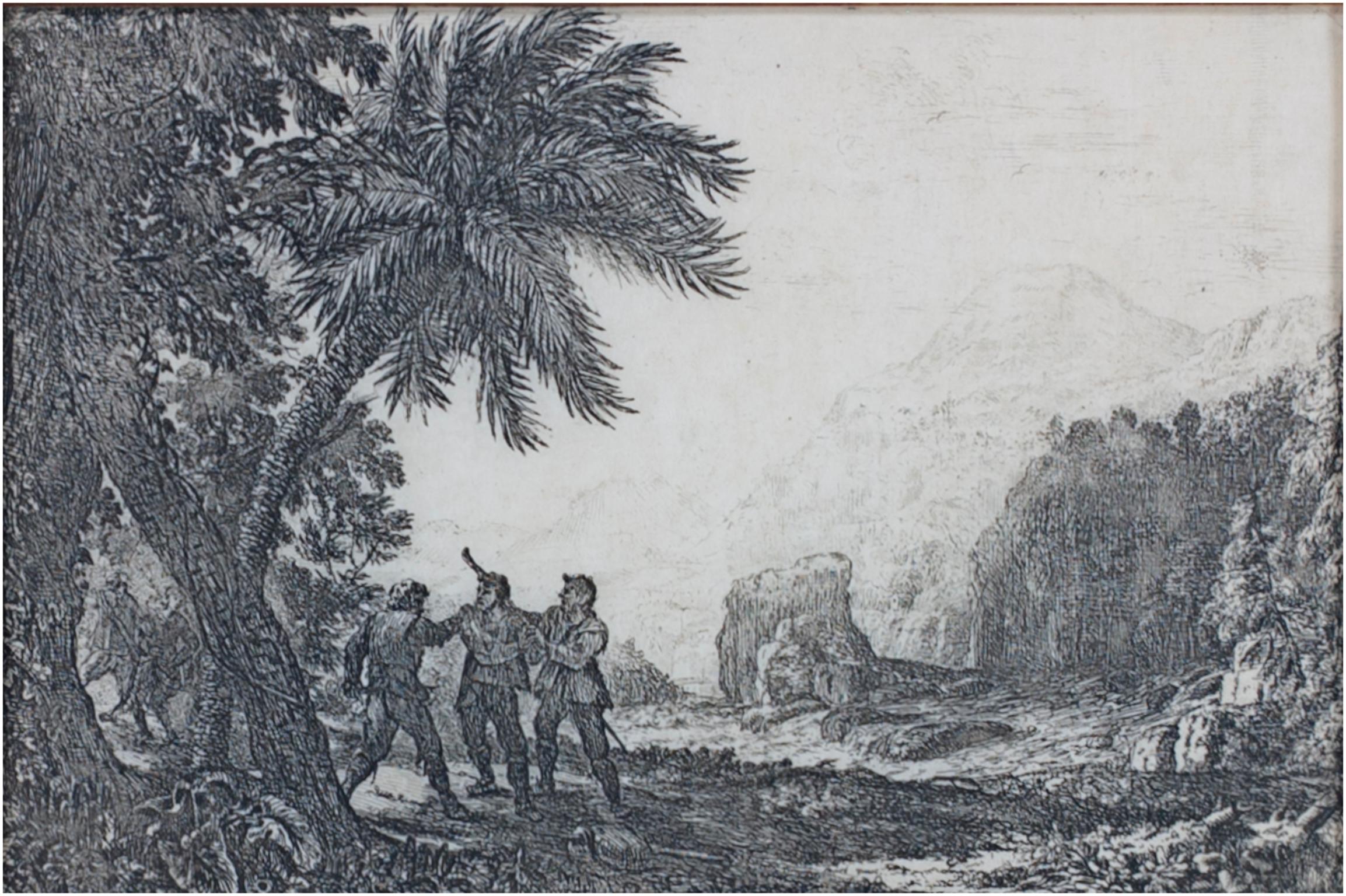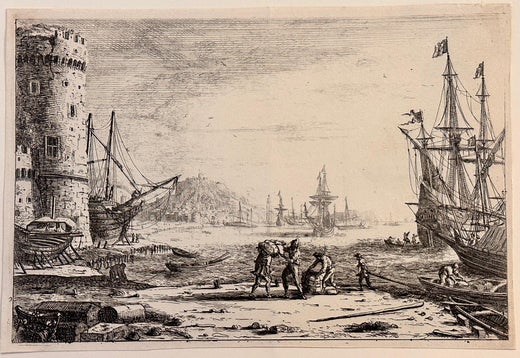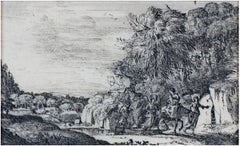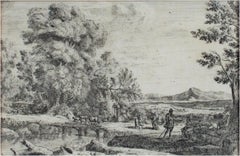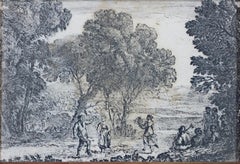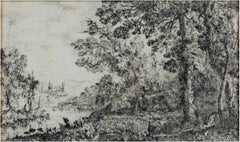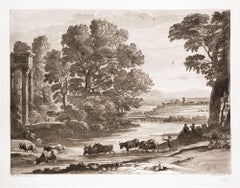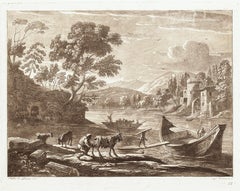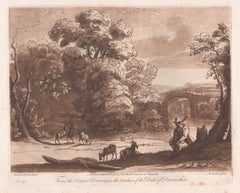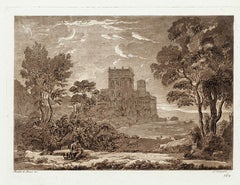Claude Lorrain17th century etching black and white landscape scene forest trees cattle1636
1636
About the Item
- Creator:Claude Lorrain (1604 - 1682, French)
- Creation Year:1636
- Dimensions:Height: 19.375 in (49.22 cm)Width: 21.875 in (55.57 cm)
- Medium:
- Movement & Style:
- Period:1630-1639
- Condition:
- Gallery Location:Milwaukee, WI
- Reference Number:Seller: 10627g1stDibs: LU605313406182
Claude Lorrain
Claude Lorrain, born Claude Gellée, was a French painter, draughtsman and engraver of the Baroque era. He spent most of his life in Italy and is admired for his achievements in landscape painting. He painted a pastoral world of fields and valleys not distant from castles and towns that entered into these quiet scenes. Landscape as a subject was distinctly nontraditional and secular during this time of religious and mythical iconography, and Gellée was certainly breaking with tradition. John Constable described the artist as the most perfect landscape painter the world ever saw and declared that in Claude’s landscape, “all is lovely, all amiable, all is amenity and repose; the calm sunshine of the heart." He passed away on November 23, 1682.
- ShippingRetrieving quote...Shipping from: Milwaukee, WI
- Return Policy
More From This Seller
View All1630s Old Masters Landscape Prints
Etching
Mid-17th Century Old Masters Landscape Prints
Etching
Mid-17th Century Old Masters Landscape Prints
Etching
1630s Old Masters Landscape Prints
Etching
1630s Old Masters Animal Prints
Etching
Mid-17th Century Old Masters Landscape Prints
Etching
You May Also Like
1810s Old Masters Figurative Prints
Etching, Aquatint
1810s Old Masters Figurative Prints
Etching, Aquatint
Late 18th Century Italian School Landscape Prints
Engraving, Mezzotint, Etching
1810s Old Masters Figurative Prints
Etching, Aquatint
1810s Old Masters Figurative Prints
Etching, Aquatint
1810s Old Masters Figurative Prints
Etching, Aquatint
